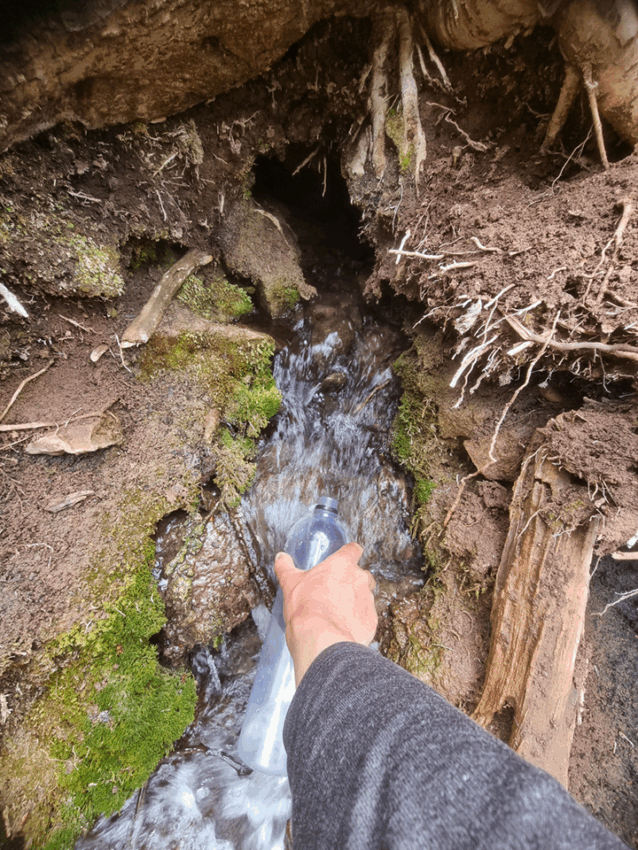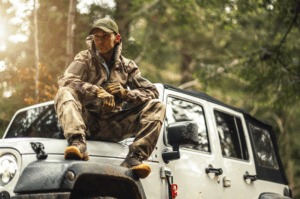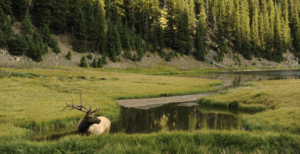
How to Find and Treat Water in the Outdoors – A Practical Guide for Hikers and Explorers
Water is by far the heaviest thing we hikers carry, and there’s still no way to reduce the weight of water itself. While ultralight materials like Dyneema have revolutionized camping gear, they can’t change the physics of hydration. That’s why understanding where to find water and how to treat it safely is essential for every outdoor adventure.
This reminds me of my experience on the Continental Divide Trail, especially in the New Mexican desert, where clean water is hard to find. As a novice hiker, anxious about water scarcity, I started out carrying six liters—way too much. That extra weight slowed me down and taught me a valuable lesson: it’s not about carrying more water, but about knowing how to refill water smartly along the way.
This is where the idea for the droply app was born: What if there was a fountain finder that always showed the closest water source? And what if it could tell you ahead of time whether a source is dry, contaminated, or buzzing with flies—before you even take a detour to check it out? Spoiler: That’s exactly what droply does. Our community-driven updates mean every user helps improve the water search for others in real time.
But before we dive into how droply can help you find water, let’s explore what we’ve learned on the trail:

💧 How to Treat Water on the Trail
Being able to safely drink water from streams, springs, and lakes opens up a world of freedom and reduces the weight on your back. Here are our favorite trail hydration techniques:
✅ Water Filters
Portable water filters are a must-have for any serious hiker. Models like the Sawyer Squeeze or Katadyn BeFree are lightweight, field-proven, and highly effective. These filters remove most common pathogens, including E. coli, Giardia, and Cryptosporidium, which are frequently found in untreated spring water and streams. Filters work by forcing water through microscopic pores, so they don’t require chemicals or batteries.
However, be aware: most filters don’t protect against viruses (like norovirus or hepatitis A) or heavy metals. That’s why understanding the nature of your water source and region is key. Still, for wilderness and backcountry use in North America and Europe, a standard filter is usually all you need to ensure clean water on the go.
🧪 Chemical Treatments
Iodine or chlorine dioxide tablets are compact and reliable tools for bottle refill in areas where biological contamination is a concern. These tablets kill bacteria, viruses, and some parasites, offering more protection than most filters alone. They’re especially useful in low-volume situations or when boiling and filtering aren’t options.
On our thru-hike, we used chemical treatments as a backup or when the water was especially murky. Just keep in mind the required wait time—often 30 minutes—and the taste, which can be a bit off-putting if used daily.
🔥 Boiling
Boiling is a 100% reliable method for purifying water—it destroys all pathogens, including viruses and protozoa. It’s ideal in emergency situations or when your equipment fails. However, it’s not the most practical option on a long-distance hike. You’ll need extra fuel, time, and a heat-safe container. Plus, letting hot water cool before storing adds to the wait. But if you’re stationary at a base camp or dealing with suspicious water, it’s a good technique to have in your toolkit.
🧣 Two-Step Filtering
If you’re dealing with water full of silt, bugs, algae, or leaf debris—common in still ponds or cow tanks—start with a pre-filter. A simple bandana, coffee filter, or even a T-shirt can catch the worst of the debris before the water hits your actual filter. This step dramatically reduces clogging and prolongs your filter’s lifespan. It’s also helpful in desert conditions, where water sources are shallow or stagnant.
🧊 Don’t Let Your Filter Freeze
One of the biggest threats to your filter is freezing. When water inside the filter element turns to ice, it can expand and crack the internal structure, rendering the filter useless, even if it looks fine on the outside. Unfortunately, there’s no way to tell just by looking. So if you’re hiking in freezing conditions, always keep your water filter in your sleeping bag at night. We made this part of our nightly routine.
⚠️ Heavy Metal Contamination
Some water sources near mines or industrial zones may contain heavy metals like arsenic, lead, or mercury—none of which are removed by typical filters. These toxins are invisible, tasteless, and dangerous. Watch for warning signs like metallic-smelling water or rocks stained a uniform orange or white. When in doubt, skip it. In these cases, even emergency iodine tablets won’t help.
🥾 Our Personal Trail Water Setup
On our camping hydration journey, we relied on a Sawyer Squeeze filter, iodine tablets for backup, and a bandana for pre-filtering. Most days, we carried 2 to 3 liters and refilled strategically. In long dry stretches—like in New Mexico—we studied maps, questioned hikers, and often gambled on cow tanks and muddy ponds. That’s when we wished for a smarter water finder tool. Now, droply does exactly that.
📱 How droply Helps You Find Water Outdoors
droply is your all-in-one water finder, built for outdoor lovers and urban travelers alike. Here’s what makes it indispensable for your next hike:
- Browse water sources on a map, online or offline
- Check recent updates from other users—know before you go
- Confirm a source by checking in and earn points for your profile
- Upload photos and describe the condition (flowing, dry, bugs, taste)
- Refill your bottle easily and reduce plastic waste on the go
Whether you’re on the trail, in a national park, or exploring a new city, droply helps you stay hydrated and plan smarter.
🌿 Final Tips and Takeaways
- Start your hike hydrated.
- Always know the distance to your next water source.
- Don’t rely on a single treatment method—have a backup.
- Contribute your knowledge to the community via droply.
Water is life, and finding it should be easy, safe, and even fun. So next time you hit the trail, bring your bottle, your filter, and the droply app.
👉 Download droply now and turn the search for water into a shared experience.
Stay safe, hydrate well, and may you always find water.
✍️ About the Authors
Streetfighter and Husky are long-distance hikers and proud finishers of the Continental Divide Trail in 2024. After navigating some of the driest and most remote regions in the U.S., they poured their hard-earned experience into developing droply—a global water finder app that helps people discover, share, and track down drinking water while hiking, camping, or traveling the world.
From dodging cow tanks to sipping from mountain springs, their mission is simple: make finding water easier for everyone, everywhere.







